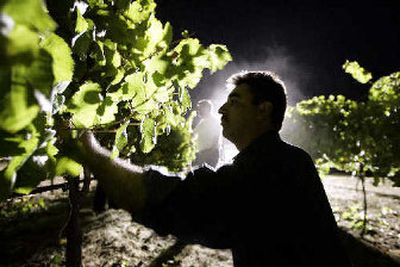Climate change could devastate U.S. wineries

WASHINGTON — Climate warming could spell disaster for much of the multibillion-dollar U.S. wine industry.
Areas suitable for growing premium wine grapes could be reduced by 50 percent — and possibly as much as 81 percent — by the end of this century, according to a study Monday in Proceedings of the National Academy of Sciences.
The paper indicates increasing weather problems for grapes in such areas as California’s Napa and Sonoma valleys.
The main problem: an increase in the frequency of extremely hot days, according to Noah Diffenbaugh of the department of earth and atmospheric sciences at Purdue University.
Grapes used in premium wines need a consistent climate. When temperatures top about 95 degrees they have problems maintaining photosynthesis and the sugars in the grapes can break down, Diffenbaugh said in a telephone interview.
“We have very long-term studies of how this biological system (of vineyards) responds to climate,” said Diffenbaugh, and that gives the researchers confidence in their projection. Diffenbaugh is a co-author of the paper.
Scientists and environmental experts have become increasingly alarmed in recent years by accumulating gasses such as carbon dioxide in the atmosphere as a result of the burning of fossil fuels.
A panel of climate scientists convened by the National Academy of Sciences reported last month that the Earth is heating up and “human activities are responsible for much of the recent warming.” The scientists said average global surface temperatures rose by about 1 degree in the 20th century. While that may not sound like much, many blame it for melting glaciers, weather changes — perhaps even more hurricanes — and threats of spreading diseases.
James A. Kennedy, a professor of food science and technology at Oregon State University, said he was shocked by the report on the potential effects on wine grapes.
“We’re definitely, in the wine industry, starting to be concerned about global warming,” said Kennedy, who was not part of the research team.
While problems are seen for California wine country, the paper suggests grape-growing conditions might improve in parts of the Northwest and Northeast.
However, the researchers note that the Northeastern and Northwestern states have higher humidity levels than the current top wine regions.